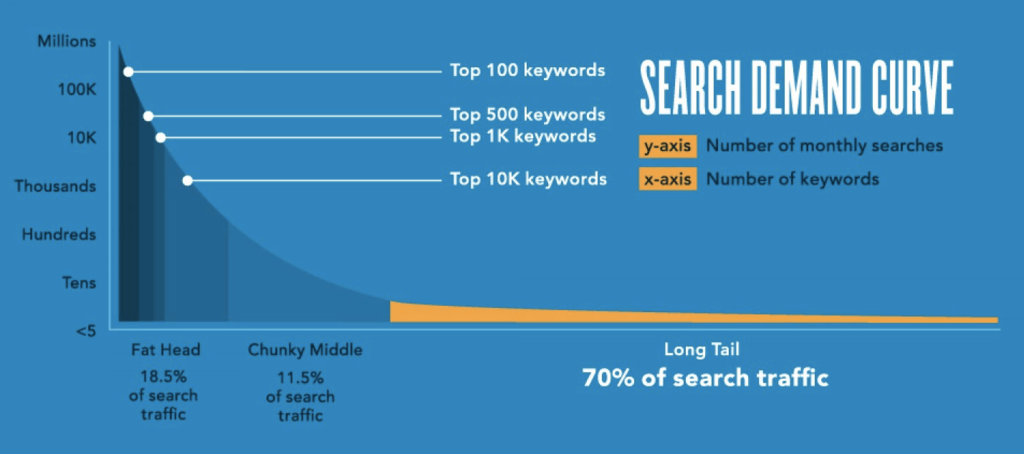
In the fast-moving world of digital marketing, businesses often struggle to stand out in crowded industries. Generic keywords are highly competitive, making it harder to gain top positions on search engines. This is where long-tail keywords play a critical role. At DigiSwarm, we empower brands to target high-intent users using well-researched long-tail keywords that are not only specific but conversion-friendly.
Rather than focusing on single, competitive keywords like “marketing” or “insurance,” long-tail keyword strategies emphasize phrases like “best digital marketing strategies for local clinics” or “affordable life insurance plans for new parents.” These terms may attract fewer searches, but they bring in more qualified and ready-to-convert users. At DigiSwarm, we’ve seen long-tail strategies outperform broad keywords by delivering higher ROI and better engagement.
As search engine algorithms evolve, they increasingly prioritize search intent and context over keyword stuffing. Long-tail keywords align with this shift by being naturally conversational and contextually rich. For brands operating in saturated markets, long-tail keyword targeting becomes the most cost-effective and impactful way to improve SEO outcomes.
What Are Long-Tail Keywords?
Long-tail keywords are longer, more specific search phrases that typically consist of three or more words. While they generate lower search volumes individually, their collective value is immense. When used strategically, they help you capture specific queries that your broader competitors might overlook.
For example:
-
Broad keyword: “jewellery”
-
Long-tail keyword: “handcrafted gold bridal jewellery in Dehradun”
Users who type such detailed queries are typically further down the purchasing funnel, meaning they have higher intent to buy. According to Ahrefs, over 90% of all searches are long-tail in nature, proving how important they are for visibility in organic search.
Why Long-Tail Keywords Dominate Competitive Niches
1. Less Competition, More Visibility
Generic keywords are targeted by millions of websites. Ranking for them is a long-term, resource-heavy game. On the other hand, long-tail keywords often have low competition, giving new or mid-sized brands a better chance to rank quickly and consistently.
For example, rather than targeting the keyword “lawyer,” a firm might rank faster for “divorce lawyer for working women in Delhi NCR.” This refined keyword narrows down competition and appeals directly to a niche segment.
2. Higher Conversion Rates
Users searching with long-tail keywords are often closer to a decision. They know what they want, and they’re using specific terms to find it. That’s why long-tail search traffic often converts better than traffic from broad keywords.
A case study published by Backlinko shows how switching focus from generic to long-tail keywords improved a blog’s conversion rate by over 43% within months.
3. Voice Search and Long-Tail Synergy
With the rise of voice assistants like Alexa and Google Assistant, people are now using more natural language when they search. This trend favours long-tail keywords since voice queries are typically in full sentences or questions.
For instance:
-
Text search: “SEO tools”
-
Voice search: “What are the best SEO tools for small businesses?”
Smart marketers optimize these natural phrases to capture both typed and spoken queries.
Creating a Long-Tail Keyword Strategy That Works
Developing a successful long-tail keyword plan requires intent-based research, audience understanding, and technical SEO integration. At DigiSwarm, we follow a structured process:
1. Audience Persona Research
Start by defining your ideal customer profiles. What are their pain points? What questions are they asking? What specific terms do they use? This helps shape long-tail keywords that align with real-world searches.
2. Use Keyword Research Tools
Use tools like:
-
Google Keyword Planner
-
SEMrush
-
Ubersuggest
-
Ahrefs
These platforms help uncover long-tail keyword variations with measurable metrics like search volume, competition, and cost-per-click (CPC).

3. Analyze Competitor Keywords
By identifying long-tail keywords your competitors rank for, you can find content gaps or refine your focus. Tools like SpyFu or SE Ranking help in tracking competitor keyword strategies.
4. Focus on Content Mapping
Match long-tail keywords with relevant content formats:
-
How-to guides
-
Case studies
-
FAQs
-
Location-based landing pages
-
Blog posts targeting specific queries
Each page should target a unique long-tail keyword or a small group of closely related ones.
On-Page Optimization with Long-Tail Keywords
Once you identify the right long-tail phrases, incorporate them naturally across key areas of your content:
-
Title tags and meta descriptions
-
H1, H2, and H3 headings
-
URL structure
-
Image alt text
-
Internal anchor links
-
First 100 words of the content
Avoid overstuffing. Search engines value readability and relevance over keyword frequency. Always aim to maintain a keyword density between 1.5% and 2%, ensuring a natural flow that appeals to readers and bots alike.
Long-Tail Keywords in Local SEO
Local businesses stand to benefit immensely from long-tail strategies. Keywords like “budget dental implants in South Mumbai” or “top-rated yoga studio near Indiranagar” not only improve visibility but also drive high-intent local traffic.
Google’s local ranking factors—such as proximity, relevance, and prominence—can be directly influenced by using localized long-tail keywords in content, schema markup, and GMB profiles.
This makes long-tail keywords essential for service-based companies operating in hyper-competitive local markets.
Monitoring Performance and Adjusting Tactics
After implementing long-tail keywords across your digital assets, monitor their impact using:
-
Google Search Console for impressions and click-through rates
-
Google Analytics for bounce rates, average session durations, and conversions
-
SEMrush or Ahrefs for SERP performance and keyword position tracking
Review and revise regularly. Some long-tail keywords may lose traction, while others may surge due to seasonal demand or algorithm updates. Adaptability is key to long-term SEO success.
Case Study: Niche SEO for a Boutique Travel Brand
A boutique travel company struggled to rank for competitive terms like “India travel packages.” After a long-tail strategy designed by DigiSwarm, they targeted phrases like:
-
“luxury travel packages for solo women in Rajasthan”
-
“eco-friendly family retreats in Himachal Pradesh”
Within 4 months, organic traffic increased by 60%, and lead conversions rose by 35%, without increasing ad spend. The focus on long-tail queries helped them dominate a niche audience and stand out from bigger brands.
Conclusion: The Long-Term Value of Long-Tail Keywords
In a world where digital noise is louder than ever, specificity wins. Long-tail keywords enable businesses to reach high-intent users, bypass intense competition, and build sustainable organic visibility. They support voice search, enhance user experience, and most importantly, deliver results.
At DigiSwarm, we specialize in comprehensive keyword strategies that unlock organic growth, especially in saturated industries. Whether you’re a start-up or scaling enterprise, we help you capture the long tail of SEO with data, creativity, and technical excellence. For businesses looking to work with the best digital marketing firm in Dehradun, DigiSwarm is your go-to partner for targeted, performance-driven SEO.
